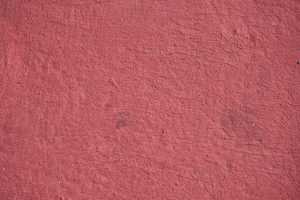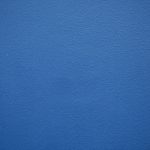-
5 Reasons Plaster Outperforms Drywall: Why Plaster is Better?
Looking to level up your walls? Ever wondered if there’s a superior alternative to drywall, also known as plasterboard, for your home or project? Gypsum plaster, commonly used for interior walls, is a soundproof option worth considering. Gypsum drywall, also known as plaster, might just be the game-changer you’ve been seeking for your wall finish. Drywall panels, or boards, are a versatile and popular choice for achieving a smooth and durable wall surface. With its exceptional durability, luxurious finish, and centuries-old reliability, plaster stands tall as a formidable contender against the popular drywall. However, when it comes to certain applications, such as creating seamless surfaces or achieving fire resistance, gypsum boards panels are the go-to choice. Additionally, in cases where repair is needed, gypsum boards panels offer a practical solution. While gypsum boards, also known as drywall, have their perks with easy installation and lightweight composition, plaster takes the lead in providing an upscale appeal and long-lasting strength that surpasses modern alternatives. Whether it’s for interior walls or stud construction, plaster remains a top choice. So, why settle for standard wall finish when you can elevate your space with time-tested superiority? Upgrade your interior wall material and enhance the overall look and feel of your room. Don’t overlook the importance of quality wall studs – they provide the foundation for a sturdy and durable structure. When it comes to sourcing the right materials, make sure to choose a reliable and reputable source.
Material Quality and Durability
Plaster Composition
Gypsum drywall, also known as drywall panels, is an exceptional interior wall material. Made of lime, sand, and water, it offers exceptional durability. Gypsum drywall is a reliable source for constructing sturdy walls. Its composition provides flexibility, making it resistant to cracking. By adding various additives, gypsum drywall plaster can be customized to enhance its properties. This allows for a versatile source of plaster that can be adapted to meet specific needs. For example, fibers or acrylics can be added to increase the strength and impact resistance of a plaster wall. These materials are commonly used as a source for enhancing the durability of plaster walls.

Plaster’s composition is the source of its unique advantage over drywall in terms of material quality. The addition of different components allows for customization based on the specific needs of a wall project. This means that plaster can be tailored to provide additional strength or other beneficial characteristics as required for a wall.
Drywall Materials
Drywall is primarily composed of gypsum, a naturally occurring mineral renowned for its fire-resistant properties. The paper used in drywall production is typically crafted from recycled materials, contributing to environmental sustainability.
Moreover, some types of drywall are engineered with special features such as moisture-resistance or fire-resistance. These variations allow for greater adaptability in different environments, such as walls, where these specific qualities may be necessary.
Durability Assessment
When assessing durability between plaster and drywall, it becomes evident that plaster walls have a longer lifespan compared to their drywall counterparts. Due to its robust nature and resistance to impacts or accidental holes, plaster requires less frequent repairs than drywall.
Drywalls are often more susceptible to dents and holes due to their construction materials which make them less durable compared with plasters’ lime-sand-water combination.
Aesthetic and Structural Benefits
Appearance Options
Plaster is better than drywall for several reasons, one of which is the wide range of textures and finishes it offers. Unlike drywall, plaster can be finished with various textures such as smooth, textured, or patterned. This versatility allows for unique wall design possibilities that cater to different aesthetic preferences. For instance, a homeowner seeking a more traditional or classic look may opt for a smooth wall finish, while someone desiring a more contemporary feel might choose a textured or patterned wall surface.
In contrast, drywall also provides some options for texturing but lacks the timeless elegance that plaster walls inherently possess. The natural appeal of plaster can significantly enhance the overall aesthetic appeal of any space by adding depth and character to the walls.

Wall Paneling
Another advantage of plaster over drywall is its ability to serve as seamless wall paneling, creating an uninterrupted and cohesive appearance across large surfaces. When used as wall paneling, plaster can provide a luxurious and sophisticated look that seamlessly integrates into various architectural styles. On the other hand, while drywall panels are commonly used for interior walls in both residential and commercial buildings due to their ease of installation and clean appearance, they do not offer the same level of sophistication as plaster when utilized in this manner.
Soundproofing and Insulation
Noise Reduction
Plaster walls outperform drywall in terms of soundproofing. The density and thickness of plaster make it more effective at reducing noise transmission between rooms. For example, if someone is playing loud music in one room with plaster walls, the sound will be less audible in the adjacent room compared to a room with drywall. While drywall can be improved with additional insulation materials like fiberglass, it still doesn’t match the natural soundproofing capabilities of plaster.
On the other hand, while drywall can be enhanced with added insulation materials such as fiberglass to improve its soundproofing properties, it still cannot match the inherent noise reduction abilities of plaster due to its density and composition.
Thermal Efficiency
Plaster walls offer superior insulation compared to drywall. Plaster’s composition helps regulate temperature within a space, leading to reduced energy consumption for heating or cooling purposes. This means that during hot summers or cold winters, spaces with plaster walls tend to maintain a more consistent temperature without excessive reliance on heating or air conditioning systems.
In contrast, while drywall can also be combined with insulation materials like fiberglass for improved thermal efficiency, it doesn’t naturally possess the same level of thermal regulation as plaster due to differences in composition and density.
Overall Benefits:
-
Plaster offers better natural soundproofing than drywall.
-
Plaster provides superior thermal insulation compared to standard drywall.
-
Drywall can be enhanced using additional insulation materials like fiberglass but still falls short of matching the inherent qualities of plaster.
Fire Resistance and Safety
Safety Features
Plaster is a non-toxic material, meaning it doesn’t release harmful chemicals into the air. On the other hand, while drywall is generally safe, some types may contain additives that emit volatile organic compounds (VOCs). This can be a concern for indoor air quality.
Plaster has a higher rating compared to standard drywall. This means that in the event of a fire, plaster walls are less likely to contribute to the spread of flames or release toxic fumes.
Fire Ratings
Plaster boasts excellent fire-resistant properties, making it suitable for constructing fire-rated walls. In contrast, while drywall can be treated with fire-resistant coatings or used in combination with other materials for improved fire resistance, standard drywall alone does not provide as high a level of protection against flames as plaster.
In terms of soundproofing and insulation benefits mentioned earlier, these features also tie into safety considerations. The ability of plaster to offer superior soundproofing and insulation contributes to creating safer living environments by reducing noise pollution and maintaining comfortable indoor temperatures without relying heavily on heating or cooling systems.
The use of non-toxic materials such as plaster further supports overall health and well-being by minimizing exposure to potentially harmful substances commonly found in some types of drywall.
Installation and Upkeep
Construction Methods
Plaster is better than drywall due to its intricate installation process, which demands skilled craftsmanship. Unlike drywall, plaster involves multiple layers and techniques that require precision and experience. Professionals or DIY enthusiasts can easily handle the relatively straightforward installation of drywall. Both materials offer flexibility in terms of installation methods based on the desired outcome for homeowners’ homes.
For example, when constructing an older-style home with a classic aesthetic, plaster’s traditional application may be preferred over modern drywall techniques. On the other hand, contemporary homes might benefit from the efficiency and simplicity of drywall installation.
Maintenance Needs
. Drywalls often need regular repairs for cracks, dents, or holes resulting from everyday use.
Proper maintenance can significantly prolong both plaster and drywall lifespan while maintaining their appearance. Homeowners should consider these factors when deciding between plaster and drywall for their homes, especially in terms of long-term maintenance requirements.
Cost and Energy Efficiency
Initial Expenses
The initial expenses of plaster installation are higher than those of drywall. Drywall is more cost-effective in terms of material and labor expenses. The overall cost depends on factors like project size, complexity, and location. For example, a small room might require less material and labor compared to a large area with intricate designs.
Plaster’s initial costs may be higher due to its application process, which requires skilled labor and specialized materials. On the other hand, drywall installation can be quicker and more straightforward, resulting in lower upfront expenses.
Long-Term Savings
Considering time as an aspect of long-term savings is crucial when comparing plaster to drywall. Plaster walls can offer long-term savings due to their durability and minimal maintenance needs. With proper care, they can last for generations without needing significant repairs or replacements.
Conversely, drywall may require more frequent repairs over time due to its susceptibility to damage from impacts or moisture exposure. These repairs result in additional expenses that could accumulate significantly over the years.
Repairing and Painting Surfaces
Fixing Imperfections
Plaster walls are indeed easier to repair and conceal imperfections compared to drywall. When fixing imperfections on plaster, the process is often simpler and requires less effort than with drywall. For instance, a small crack or hole in a plaster wall can be filled in with new plaster and seamlessly blended into the surrounding surface. On the other hand, repairing similar imperfections in drywall might involve cutting out damaged sections, applying joint compound or spackle, sanding it down, and then repainting the area for a seamless finish.
Both plaster and drywall can be repaired effectively using appropriate techniques and materials. However, due to its composition and application method, plaster tends to offer more forgiving properties.
Finish Comparisons
When comparing finishes between plaster and drywall surfaces, plaster finishes have a unique depth and texture that cannot be replicated with drywall. The application of traditional lime-based plaster creates an organic look that adds character to any space. This natural variation in texture is what sets it apart from the uniform appearance of standard drywall.
On the other hand, drywall finishes offer versatility ranging from smooth surfaces to various textures such as orange peel or knockdown patterns. While these options provide different design aesthetics for interior spaces, they may not match the distinct visual appeal achieved by traditional lime-based plasters.
Hanging Decor and Installations
Artwork and TV Mounting
Plaster walls offer a sturdy base for hanging artwork or mounting TVs. The solid composition of plaster makes it reliable for supporting various objects. On the other hand, drywall can accommodate lightweight items but may need additional reinforcement for heavier objects. For instance, while you might be able to hang a small painting on drywall without any issues, mounting a large TV could pose a challenge without proper support.
Both plaster and drywall require proper installation techniques and wall anchors when hanging decorations or installing appliances. Using the right tools and methods is essential to ensure that your artwork stays securely in place on either surface.
Wall Anchors and Techniques
. These specialized anchors are crucial for providing adequate support without causing damage to the wall itself. Conversely, drywall offers more flexibility with various anchor options such as toggle bolts, plastic anchors, or molly bolts.
Understanding the appropriate anchor selection is vital for both plaster and drywall installations. Employing correct installation techniques is equally important regardless of whether you’re working with plaster or drywall surfaces.
Eco-Friendly Considerations
Environmental Impact
Plaster is indeed a more sustainable option than drywall due to its composition of natural materials. Unlike drywall, which involves mining gypsum, plaster’s production has a lower environmental impact. When assessing the environmental impact, factors such as material sourcing, energy consumption, and waste generation should be considered. For example, the extraction and transportation of gypsum for drywall production contribute significantly to its environmental footprint.
Drywall production involves mining gypsum, which can have some negative environmental effects. On the other hand, plaster is made from natural materials that are less harmful to the environment. This makes it an environmentally friendly choice compared to drywall.
Sustainable Choices
Choosing locally sourced materials for plaster contributes to sustainability efforts by reducing transportation emissions. Opting for recycled drywall or low VOC (volatile organic compound) options also plays a role in promoting sustainable construction practices. Both plaster and drywall can be part of sustainable construction practices when selected thoughtfully.
When selecting building materials like plaster or drywall with sustainability in mind, choosing locally sourced materials reduces transportation emissions associated with their delivery and supports local economies at the same time.

Conclusion
So there you have it! Plaster has proven itself to be a superior choice over drywall in various aspects such as durability, aesthetics, soundproofing, fire resistance, and eco-friendliness. Its ability to withstand the test of time and provide a solid foundation for your home is unmatched. Not to mention the added bonus of being able to hang decorations without worrying about damaging the walls.The benefits of plaster clearly outweigh those of drywall.
Now that you’re armed with these insights, it’s time to make an informed decision for your next home improvement project. Whether you’re considering a renovation or building from scratch, keep in mind the long-term advantages that plaster offers. Your home deserves the best, and plaster certainly delivers on that front.
Frequently Asked Questions
Is plaster more durable than drywall?
Absolutely! Plaster is known for its exceptional durability and longevity compared to drywall. Its solid composition makes it resistant to dents, scratches, and impact damage, ensuring a longer lifespan for your walls.
Does plaster provide better soundproofing than drywall?
Yes, indeed! Plaster offers superior soundproofing properties compared to drywall. Its dense nature effectively absorbs and dampens sound vibrations, creating a quieter and more peaceful indoor environment.
What are the differences in cost between plaster and drywall, particularly when it comes to gypsum plasterboard for interior walls?
While initially more expensive than drywall installation, the long-term benefits of plaster often outweigh the higher upfront costs. With its durability and minimal maintenance requirements, plaster can be a cost-effective choice in the long run.
Can I hang heavy decorations on plaster walls?
Certainly! Plaster’s robust composition allows you to securely hang heavier decor items without worrying about causing damage or instability. It provides a sturdy base for hanging artwork, shelves, mirrors, or any other decorative elements.
Is plaster considered an eco-friendly option over drywall?
Absolutely! Plaster is generally regarded as a more sustainable choice due to its minimal environmental impact during production and its potential for reuse or recycling at the end of its lifespan.

